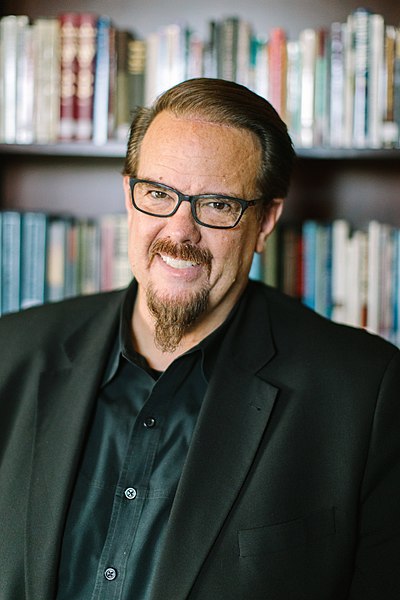新型コロナ・ウイルスへの不安に駆られた何百万もの人々が、恐れを抱いてグーグル検索し、結果としてキリスト教伝道者につながり、オンラインで会話を持つことになった。
[toggle]Millions of worried people who have turned to Google with their anxiety over COVID-19 have ended up connecting with Christian evangelists in their search results—leading to a spike in online conversions in March. [/toggle]
「グローバル・メディア・アウトリーチ」(GMO)のホームページ
フィリピンではグレイスという女性が、新型コロナ・ウイルスの不安についてのホームページから、ネット伝道団体「グローバル・メディア・アウトリーチ」(GMO)へとアクセスした。「いろいろと心配しないように助けてください。今とても混乱しているのです」とチャットで相談したところ、「永遠に続く平安を与えられるのはイエスしかいない」とボランティアのカウンセラーが説明して、彼女はイエスを救い主として受け入れたのだ。
[toggle]In the Philippines, a woman named Grace found herself on a website about coronavirus fear hosted by the internet evangelism organization Global Media Outreach (GMO). “Please help me not to worry about everything,” she wrote in a chat with a volunteer counselor. “What’s happening now is very confusing.” The counselor explained that only Jesus can bring lasting peace, and Grace received Jesus as her Savior. [/toggle]また米国ではビリー・グラハム伝道協会(BGEA)が、ブリタニーという若い母親とオンラインでチャットした。彼女は、自分と子どもの命が新型コロナ・ウイルスに奪われるのではないかと心配していた。ボランティアは希望と平安について分かち合い、彼女もキリストを受け入れた。
[toggle]Back in the US, a volunteer at the Billy Graham Evangelistic Association (BGEA) chatted online with a young mother named Brittany who worried that COVID-19 would take her life and her children’s lives. The volunteer offered hope and peace, and Brittany too accepted Christ. [/toggle]オンライン伝道団体であるGMO、BGEA、Cru(キャンパス・クルセード)の3団体は毎年、インターネット上で少なくとも2億回以上、福音を語っているという。新型コロナ・ウイルスの感染拡大がパンデミック(世界的大流行)だと宣言された3月初旬以降、「イエスについて知りたい」とインターネットで情報を探す人の数が増加していると3団体とも口をそろえる。
[toggle]Three of the largest online evangelism ministries—GMO, BGEA, and Cru—account cumulatively for at least 200 million gospel presentations on the internet each year. All three say the number of people seeking online information about knowing Jesus has increased since the COVID-19 outbreak was declared a pandemic in early March. [/toggle]3月中旬から下旬まで、サーチエンジン上にある、希望を見いだすことに関連したバナーへのクリック数が170%増加したとGMOは報告している。恐れに関するバナーへのクリックは57%増え、心配については39%だった。この3月における1億2400万回もの福音宣教は、2019年の平均的な数字と比べると16%も増加した。
[toggle]Between mid-March and late March, GMO saw a 170 percent increase in clicks on search engine ads about finding hope. Clicks on ads about fear increased 57 percent, and about worry 39 percent. The ministry’s 12.4 million gospel presentations in March represented a 16 percent increase over the average month in 2019. [/toggle]コペンハーゲン大学の教授によると、祈りに関連するネット検索は3月にいきなり増加し、75カ国において過去5年で最多となった。
[toggle]This recent surge corresponds with a broader finding by a University of Copenhagen professor: Internet searches related to prayer in 75 countries skyrocketed to their highest levels in five years in March. [/toggle]「何百万もの人が恐れに直面し、信仰について話すことに心を開いています。そんな人たちが利用できるよう、私たちは立ち上がったのです」と、GMO求道者指導担当のミシェル・デートリッヒ氏は言う。
[toggle] “We are seeing millions of people open to talking about faith in the face of fear,” said Michelle Diedrich, GMO’s seeker journey director, “and we’re ramping up to be available for them.” [/toggle]牧師や伝道者、そしてオンライン伝道者も同じような話を伝えている。新型コロナ・ウイルスは、すでに増加傾向にあったネット伝道を加速させたのだ。ウイルスの拡散が徐々に落ち着きを見せるにつれて、オンライン伝道の増加がこのまま続くのかどうか、また入信者の弟子訓練がどう改善できるのかを見きわめようとしている。オンラインで信仰に導かれた人のうち、フォローアップの対話ができたり、地元の教会に出席したりするのはほんの一握りだからだ。
[toggle]Pastors, evangelists, and online ministries tend to tell a similar story: COVID-19 escalated an already significant trend toward internet evangelism. As the virus’s spread eventually wanes, they will seek to determine whether the uptick in online witness can be sustained—and how they might improve discipleship for these new believers. Only a fraction of those who come to faith online engage in follow-up discussions or report joining a local church. [/toggle]「エレクトロニクスとアバター」による伝道
[toggle]Evangelism via ‘electrons and avatars’ [/toggle]BGEAは3月、6ヵ国語(英語、スペイン語、ポルトガル語、韓国語、中国語、アラブ語)で新型コロナ・ウイルスに関する資料ページを開設した。そして、ソーシャル・メディア上で恐れをテーマにしたキャンペーンを展開した。
[toggle]In March, BGEA launched landing pages with coronavirus resources in six languages (English, Spanish, Portuguese, Korean, Mandarin Chinese, and Arabic). The association also launched social media campaigns themed around fear. [/toggle]「最初の4週間で17万3000人がホームページを閲覧し、1万人以上がキリストに従う決心のボタンをクリックしました」と、BGEAのインターネット伝道担当マーク・アップルトン氏は言う。これはBGEAの伝道サイト SearchForJesus.net や PeaceWithGod.netといった通常の伝道サイトも含んでおり、1日に3万近いアクセスがある。
[toggle]In the first four weeks, 173,000 people visited the websites and more than 10,000 clicked a button indicating they made decisions for Christ, said Mark Appleton, BGEA’s director of internet evangelism. That was in addition to traffic on BGEA’s standard family of evangelistic websites, which includes SearchForJesus.net and PeaceWithGod.net and sees nearly 30,000 visitors per day. (CT reported in 2015 that online gospel presentations through BGEA were equivalent to a daily Billy Graham crusade.) [/toggle]新型コロナ・ウイルスのページを閲覧していた17歳のドンメルは、ボランティアとのチャットでこのように語った。「自分は宗教的ではないのですが、神様以外の誰に頼ればいいのか分からないのです」。その45分後、ドンメルはキリストを信じ、弟子訓練の資料を紹介された。
[toggle]visitor to the coronavirus page, a 17-year-old named Donmere, told a chat volunteer, “I’m not really a religious person, but I don’t know who else to turn to but God.” Forty-five minutes later, Donmere was a follower of Christ and had been pointed to discipleship resources. [/toggle]ドンメルの回心は、インターネット上での救いの経験の典型例と言える。
[toggle]Donmere’s conversion fits the profile of typical internet salvation experiences. [/toggle]マーク・ペニック牧師がダラス・バプテスト大学で博士論文のため研究したのは、IAmSecond.comという伝道用ホームページを通してキリストを信じた人についてだ。17の州にわたる37人にインタビューして詳しく話を聞いたところ、対象者が「つらい経験をしてきた」こと、つまり離婚や失業、経済危機などによって真実を探求し、質問するきっかけになったと知った。その86%がキリスト教のホームページに行き着いたのは想定外だったが、「(広告や検索結果をクリックするのは)自分の意思だった」という。また75%が、ウェブ上での回心前に「個人的な問題や依存の問題を抱えていた」としている。
[toggle]Pastor Mark Penick, in his 2013 doctoral dissertation at Dallas Baptist University, studied converts who came to Christ through the evangelistic website IAmSecond.com. Through in-depth interviews with 37 individuals in 17 states, Penick determined all his subjects “experienced an impassible quandary” like a divorce, job loss, or financial crisis that left them searching and questioning. Eighty-six percent said finding a Christian website was unplanned but “of their own initiative” (through actions like clicking on an ad or a search engine result). About 75 percent had “personal dysfunction and addiction issues” prior to their online conversions. [/toggle]インターネット伝道についての学術的分析は少ないが、オンラインでの私的な証しは比較的よくあると、2014年にピュー調査研究所は報告している。米国では、5人に1人が週に1度はオンラインで信仰を分かち合い、60%が毎週、オンラインで宗教的な分かち合いがされるのを見ているという。
[toggle]Few scholarly analyses of internet evangelism have been attempted—mostly dissertations and doctoral projects on specific evangelistic initiatives—but in 2014, the Pew Research Center found that informal online witnessing was relatively common. One in five Americans said they shared their faith online at least weekly, and 60 percent said they saw religion shared online at least weekly. [/toggle]2018年のバーナ・リサーチの報告によると、テクノロジーによって伝道しやすくなったことについて、ほとんどのクリスチャンが同意しており、58%のノンクリスチャンがフェイスブック上で信仰を共有した人がいたと言い、14%はソーシャル・メディアで証しを聞いたという。
[toggle]In 2018, Barna Research reported that most Christians agree technology is making it easier to evangelize and that 58 percent of non-Christians said someone had shared their faith with them on Facebook, with another 14 percent hearing a testimony through other social media channels. [/toggle]
エド・ステッツァー(写真:BGC1-Wiki)
ホイートン大学ビリー・グラハム伝道センター所長のエド・ステッツァー氏によると、宣教学者はおおむねインターネット伝道に好意的だという。
[toggle]Ed Stetzer, director of the Billy Graham Center for Evangelism at Wheaton College, said missiologists generally have a favorable view of internet evangelism. [/toggle]「歴史上、伝道はいつも足と顔を用いて行われてきました。行って、伝えたのです。しかし(21世紀の)現代人は、エレクトロニクスやアバター(ネット上の自分のキャラクター)を用いてもいいと考えています」
[toggle] “Historically, we’ve always thought of evangelism being done with our feet and our faces,” he said. “We go and we tell. But people feel okay that it might involve electrons and avatars” in the 21st century. [/toggle]Cruでは、絵文字を使って証しをする。Cruの大学キャンパスでのデジタル伝道では、霊的な会話を始めるツールとなっているのは、絵文字で回答するアンケートだ。また、スマホアプリや多言語での福音メッセージ、福音につなげるための生活上の困りごとに関するオンライン記事も用いている。このミニストリーで効果を上げているホームページに EveryStudent.comがあり、昨年は5600万の閲覧と65万7000人の決心者があった。
[toggle]At Cru, witnessing also involves emojis. Among Cru’s digital evangelism tools for college campuses is a survey to be answered with emojis to start a spiritual conversation. Cru’s online presence also includes evangelistic mobile apps, gospel presentations in various languages, and online articles using felt needs as bridges to the gospel. One of the ministry’s most effective evangelistic websites, EveryStudent.com, received 56 million hits last year and registered 657,000 decisions for Christ. [/toggle]新型コロナ・ウイルスに対応するため、Cruはホームページに52の新しい情報を加えた。多くの人が閲覧することになった結果、 EveryStudent.comの訪問者数と決心者数は昨年の合計数を大幅に上回るペースとなり、現在すでに2000万の訪問と30万人の決心者が与えられている。
[toggle]In response to COVID-19, Cru has added 52 new resources to its websites. A corresponding bump in traffic has the ministry on pace to eclipse last year’s total number of visitors to EveryStudent.com by 20 million in 2020 and the site’s total decisions for Christ by more than 300,000. [/toggle]大学生向けの伝道をしている米国インターバーシティも、新型コロナ・ウイルス感染拡大の中で、同じように霊的な関心が高まっていると報告している。4月初週にネットに出した献金広告には、「ここ近年ないほど多くの人が先週、人生で初めてイエスに従う決心をしている」とある。
[toggle]The college-focused ministry InterVarsity USA reported a similar increase in spiritual interest amid COVID-19. In an online fundraising ad running the first week in April, the ministry stated, “We’ve seen more first-time decisions to follow Jesus in the last week than at any other time in the past year.” [/toggle]アメリカン・エンタープライズ社による調査によると、Cruやインターバーシティがターゲットとしているヤング・アダルト層は、年上の年齢層と比べて新型コロナ・ウイルスを最も恐れている(少なくともいくつかの点で)ことが分かった。
[toggle]A study by the American Enterprise Institute suggested the young adults targeted by ministries like Cru and InterVarsity may be more worried about the coronavirus—at least in some respects—than their counterparts in older generations. [/toggle]調査では、18~29歳の53%が、パンデミックの中で生活費が払えるか心配していることが明らかになった。30~49歳の59%が同じような不安を抱え、65歳以上では29%しかいなかった。すべての年代で、新型コロナ・ウイルスの感染拡大によって自分が神に近づけられたと感じたといい、それには、自らを無宗教とした14%の人も含まれていた。
[toggle]The survey found that 53 percent of 18- to 29-year-olds are concerned about being able to afford basic housing costs amid the pandemic. Fifty-nine percent of 30- to 49-year-olds expressed the same concern, compared with just 29 percent of Americans age 65 and older. Across all generations, people said the coronavirus outbreak has caused them to feel closer to God, including 14 percent of the religiously unaffiliated. [/toggle]新型コロナ・ウイルスが世界を席巻する中で宗教的関心が高まっていることははっきりしている。しかし、こうした宗教的な検索数の増加が、関心の高まりによるものなのか、それとも対人的な宗教活動の一時的な代替手段なのかはまだ分からない。
たとえばCruは、すべての伝道と弟子訓練グループをオンラインに切り替え、ビデオ会議システム「ズーム」を用いている。3月下旬、Cruは1日で746回のズーム会議を行ったが、米国で社会的距離を守ることが本格的に始まる前の2月には、1カ月で474回しかなかった。
[toggle]Despite the documented rise in religious interest as COVID-19 sweeps the world, it remains unclear how much of the increase in religious internet traffic is due to the heightened interest and how much is simply a temporary replacement for in-person religious activity. Cru, for instance, has taken all of its evangelism and discipleship groups online via the video conferencing software Zoom. On a single day in late March, Cru held 746 Zoom calls, compared with 474 for the entire month of February before social distancing began in earnest for the US. [/toggle]ライフウェイ・リサーチ社の調査によれば、3月29日までにほとんどの教会がオンラインに移行し、実際に集まって礼拝を行ったのは7%だった。3月中、オンラインの説教や礼拝をしていない福音派の牧師は8%しかいなかった。(後編に続く)
[toggle]By March 29, only 7 percent of American churches were still holding physical gatherings and most had moved online, according to a survey by LifeWay Research. Just 8 percent of Protestant pastors said they had not provided any online sermons or worship services for their congregations during the month of March. [/toggle]